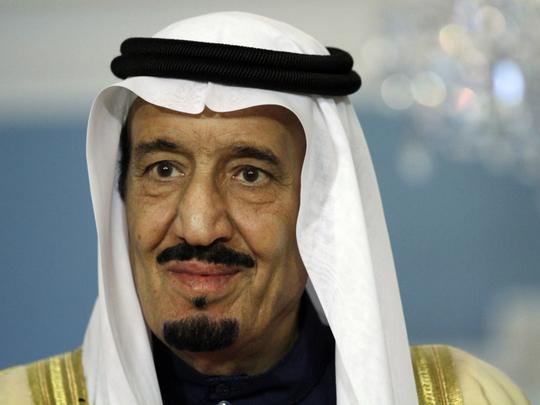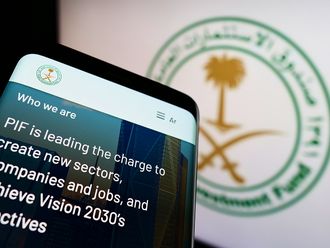
Beirut: Unlike his predecessor, Salman Bin Abdul Aziz Al Saud acceded the throne amid a sea of regional and global manifestations, which promised to usher in permanent changes in both the Arab and Muslim worlds. His writ was to safeguard Saudi interests, protect the nation from numerous foes, and allow the Kingdom to prosper—objectives that were steady and etched in stone.
Towards that end, the monarch created two mega institutions—the Council of Political and Security Affairs (CPSA), headed by Heir to the Heir Apparent and Minister of the Interior Mohammad Bin Nayef, and the Council of Economic and Development Affairs (CEDA), headed by the Minister of Defense Mohammad Bin Salman—to develop sound policies, which further institutionalized the process. Of course, while the King’s goals rested on a clear ideology and emulated those of the founder and each monarch that ruled Saudi Arabia between 1953 and 2015, epochal changes required adaption. Could Riyadh adjust long-held policies and what kind of likely alterations were probable?
On January 23, 2015, King Salman inherited a full plate, and while he was part and parcel of the collegial decision-making process for years—with the monarch reaching final decisions after full consultations across the political gamut—he was, nevertheless, elevated to the unenviable position of final arbiter.
The major concerns were well known, headed by an Iranian expansionist policy that sought to literally squeeze the Arabian Peninsula from Iraq to Yemen. Closer to Riyadh, interferences in Bahrain and the prodding of local Shiite irredentism were all too real too. In addition to these existential challenges, Riyadh faced the Syrian conundrum, a pro-Iran Hezbollah militia that propped Damascus while it threatened Beirut, and a shaky Baghdad where government became synonymous with corruption and non-governance. In both Iraq and Syria, the conservative monarchy tackled Daesh. Even Turkey, a secularized state, made a bid to contest Saudi leadership to lead the Muslim world ostensibly because its thoroughly Islamized leaders appeared to be Westernized that, Ankara believed, ought to be a model worthy of emulation.
Amid these overwhelming developments, shifting positions in leading Western countries, which belied long-standing accords that were etched in stone, antagonized Riyadh as well. Starting with the George W. Bush Administration, Washington embarked on a reassessment of its ties with Riyadh, which reached a crescendo under President Barack H. Obama, whose preferences for an opening to Iran were rather clear. Naturally, the late King Abdullah bin Abdul Aziz, Foreign Minister Prince Saud al-Faisal, and practically all Saudi leaders were sensitive to these advances as they worked in earnest to protect and promote Saudi interests while they preserved existing ties despite many disappointments.
Many wondered whether US foreign policy gurus would eventually transform and forego an 80-years old partnership, though it was interesting to notice that President Obama led a large delegation to pay his condolences to the Al Saud and the people of Saudi Arabia as well as to congratulate King Salman on his accession because, perhaps, some realized what was at stake. In fact, neither the short trip nor the heavyweight delegation that accompanied him were coincidental, for even Obama must have concluded that a bird in the hand is preferable to two in the bush. Washington and Iran may yet consummate a full reconciliation and, conceivably, reach an agreement on Iran’s nuclear program whose goal was to acquire an atomic weapon. Yet, American leaders knew that Riyadh could not tolerate that such an accord be at the expense of Saudi Arabia and its Gulf Cooperation Council allies, and would react accordingly. Even if few could ascertain whether King Salman would tell President Obama what King Abdullah [when he was heir] reportedly told former US president Bill Clinton on February 8, 1999—that “friendship has limits, Mr. President” after Clinton wanted to introduce him to Israeli officials attending King Hussein’s bin Talal’s funeral in Amman—few should.
There were no doubts that the relationship Riyadh maintained with Washington was the most important one for the Kingdom, and though repeated American adventures hampered them, Saudi officials were determined to preserve it. Nevertheless, few should be surprised if the approach evolved, with King Salman anxious to affirm his will to power in a part of the world that was ripped apart along sectarian lines. Even fewer should persuade themselves that the monarch would forego that leadership role. On the contrary, and barely a few weeks after his accession, King Salman seemed as resolute as ever to rally the troops and forge ahead. That is why he focused on intra-Gulf relations, both to remove lingering disagreements among GCC ranks as well as to telegraph that Riyadh intended to lead the Arab Gulf monarchies.
King Salman is a pillar of the ruling Al Saud family with hands on experience that spanned the decades that, naturally, meant carryovers from previous governments. Still, we should also anticipate concrete changes in the direction of the Kingdom’s foreign policy, and while the CPSA will implement established decisions, those who only expect cosmetic transformations may well be surprised simply because circumstances now necessitate concrete and substantial emendations.












